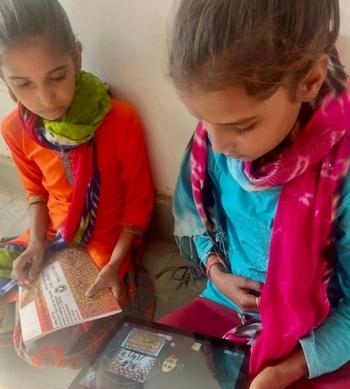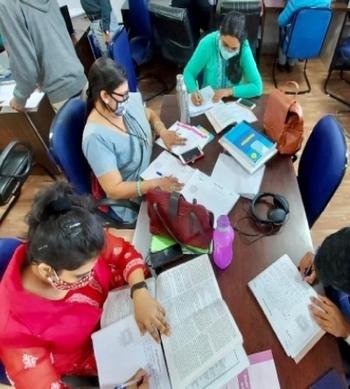CBSE Class 6 Mathematics Syllabus for 2023-24
The CBSE board publishes the Class 6 Maths CBSE Syllabus in an effort to provide pupils with a high-quality education. Students can better arrange their studies if they are aware of the syllabus before the start of the academic year. They also gain insight into the subjects they should pay closer attention to. The CBSE Class 6 Maths Syllabus is available here. Details on the subjects that children in class 6 must study for maths are provided in the CBSE Syllabus.
For those who have a firm grasp of the principles, maths is a subject that scores well. In order to help Class 6 pupils in the CBSE acquire analytical and problem-solving skills, this topic has been added to the curriculum. Students will gain a clear comprehension of the material and a better understanding of the topics with the aid of the CBSE Class 6 Maths Syllabus. The link below will let students download the CBSE 6th Class Maths. They can also print it out and use it as a study guide.
Skip to
CBSE Class 6 Maths Syllabus 2023-24
Students can have a look at the topics of the CBSE Class 6 Maths Syllabus below.
| Unit | Unit Name | Section |
| 1 | Number System | Knowing Your Numbers Playing with Numbers Whole numbers Negative Numbers and Integers Fractions |
| 2 | Algebra | Introduction to Algebra |
| 3 | Ratio and Proportion | Ratio and Proportion |
| 4 | Geometry | Basic geometrical ideas (2 -D) Understanding Elementary Shapes (2-D and 3-D) Symmetry Constructions (using Straight edge Scale, protractor, compasses) |
| 5 | Mensuration | Concept of Perimeter and Introduction to Area |
| 6 | Data Handling | Data Handling |
CBSE Class 6 Maths Syllabus – Chapter Names
The chapter titles and subjects for each chapter are included in the table below. These chapters are all included in the NCERT Class 6 Maths textbook for students. It is advised that students use the NCERT textbook because it matches the CBSE syllabus and has all of the material covered. Additionally, NCERT texts are used to prepare the yearly test question paper. We have provided links to some of the themes in the table below. These are links to the Class 6 Mathematical NCERT Solutions. If a student is having trouble with one of the exercise difficulties, they can consult them for assistance.
| Chapter Names | Topics |
| Chapter 1: Knowing Our Numbers | 1.1 Introduction 1.2 Comparing Numbers 1.3 Large Numbers in Practice 1.4 Using Brackets 1.5 Roman Numerals |
| Chapter 2: Whole Numbers | 2.1 Introduction 2.2 Whole Numbers 2.3 The NumberLine 2.4 Properties Of Whole Numbers 2.5 Patterns in Whole Numbers |
| Chapter 3: Playing With Numbers | 3.1 Introduction 3.2 Factors and Multiples 3.3 Prime and Composite Numbers 3.4 Test For Divisibility Of Numbers 3.5 Common Factors and Common Multiples 3.6 Some More Divisibility Rules 3.7 Prime Factorisation 3.8 Highest Common Factor 3.9 Lowest Common Multiple 3.10 Some Problems on HCF and LCM |
| Chapter 4: Basic Geometrical Ideas | 4.1 Introduction 4.2 Points 4.3 A Line Segment 4.4 A-line 4.5 Intersecting Lines 4.6 Parallel Lines 4.7 Ray 4.8 Curves 4.9 Polygons 4.10 Angles 4.11 Triangles 4.12 Quadrilaterals 4.13 Circles |
| Chapter 5: Understanding Elementary Shapes | 5.1 Introduction 5.2 Measuring Line Segments 5.3 Angles-’Right’ and ‘Straight’ 5.4 Angles- ‘Acute’, ‘Obtuse’ and ‘Reflex’ 5.5 Measuring Angles 5.6 Perpendicular Lines 5.7 Classification of Triangles 5.8 Quadrilaterals 5.9 Polygons 5.10 Three-Dimensional Shapes |
| Chapter 6: Integers | 6.1 Introduction 6.2 Integers 6.3 Addition of Integers 6.4 Subtraction of Integers with the help of a Number Line |
| Chapter 7: Fractions | 7.1 Introduction 7.2 A Fraction 7.3 Fraction on the Number Line 7.4 Proper Fractions 7.5 Improper and Mixed Fractions 7.6 Equivalent Fractions 7.7 Simplest Form of a Fraction 7.8 Like Fractions 7.9 Comparing Fractions 7.10 Addition and Subtraction of Fractions |
| Chapter 8: Decimals | 8.1 Introduction 8.2 Tenths 8.3 Hundredths 8.4 Comparing Decimals 8.5 Using Decimals 8.6 Addition of Numbers with Decimals 8.7 Subtraction of Decimals |
| Chapter 9: Data Handling | 9.1 Introduction 9.2 Recording Data 9.3 Organisation of Data 9.4 Pictograph 9.5 Interpretation of a Pictograph 9.6 Drawing a Pictograph 9.7 A Bar Graph |
| Chapter 10: Mensuration | 10.1 Introduction 10.2 Perimeter 10.3 Area |
| Chapter 11: Algebra | 11.1 Introduction 11.2 Matchstick Patterns 11.3 The Idea Of A Variable 11.4 More Matchstick Patterns 11.5 More Examples of Variables 11.6 Use Of Variables in Common Rules 11.7 Expressions with Variables 11.8 Using Expressions Practically 11.9 What is an Equation? 11.10 Solution of an Equation |
| Chapter 12: Ratio and Proportion | 12.1 Introduction 12.2 Ratio 12.3 Proportion 12.4 Unitary Method |
Conclusion
the CBSE (Central Board of Secondary Education) class 6 Mathematics syllabus consists of various topics that lay the foundation for mathematical concepts and skills.
FAQ's
Q.1:- How can I prepare effectively for the CBSE class 6 Mathematics exams?
A.1:-To prepare effectively, it is important to understand the concepts thoroughly. Practice regularly by solving problems from the textbook and other relevant resources. You can also refer to previous years' question papers and sample papers to familiarize yourself with the exam pattern and types of questions asked.
Q.2. Is there any practical component in the CBSE class 6 Mathematics syllabus?
Q.2. Yes, the syllabus includes a practical component in the form of practical geometry, where students learn to construct different geometric shapes using specific tools and techniques.
Q.3. Is the CBSE class 6 Mathematics syllabus the same for all schools?
A.3. Yes, the CBSE syllabus is designed to be uniform across all schools affiliated with the CBSE board. However, slight variations may occur in the mode of teaching or the pace at which topics are covered.
Download CBSE Class 6 Maths Syllabus for 2023-24 PDF

MissionGyan Team
We aim to eradicate the education gap and serve equal and free education to all with the help of skilled and expert volunteers and teachers.





